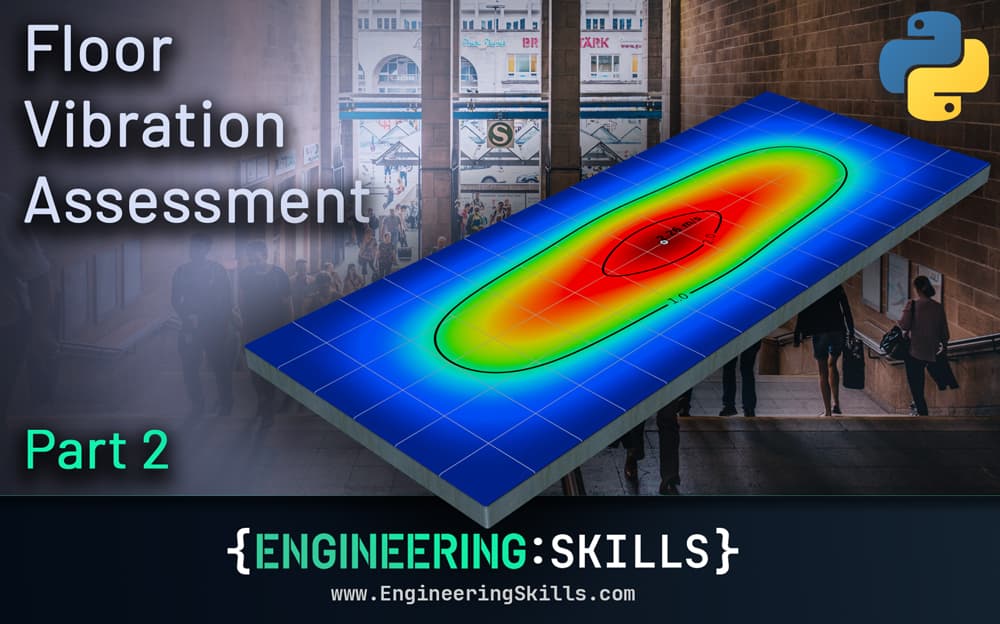Calculating response factors for floor vibration and assessing performance
![[object Object]](/_next/image?url=%2Fimages%2Fauthors%2Fsean_carroll.png&w=256&q=75)
Welcome to part 2 in this occupant-induced floor vibration series. If you haven’t read part 1, do that now - it covers all of the background to the calculations we’ll be implementing in this tutorial.
Here, in part 2, our aim is to implement both the low and high-frequency analysis procedures we discussed previously. My guess is that, even after reading through part 1, you still have some questions about how the analysis workflows are implemented. We want to address these questions so that you walk away from this tutorial able do directly apply these methods to your own structures.
Make sure to download the complete Python code that goes with this tutorial (linked above). I’ve prepared a Jupyter Notebook that captures everything we’re going to cover and runs from start to finish with one click. It should be a really handy reference to look at in parallel to reading this tutorial.
We’ll cover two design examples:
- a low-frequency footbridge analysis
- and a high-frequency floorplate analysis.
The type of structure (linear footbridge versus 2D planar floorplate) only influences the determination of modal characteristics. You can apply either of the analyses demonstrated below to any ‘walking structure’ you like - once you can determine the modal properties.
Ok, with all that said, let’s dive in!
All Access Membership
Learn, revise or refresh your knowledge and master engineering analysis and design
Access Every Course and Tool
- Over 1103 lectures & over 225 hours of HD video content
- Access member-only 'deep dive' tutorials
- Access all downloads, pdf guides & Python codes
- Access to the StructureWorks Blender addon + updates
- Packed development roadmap of courses & tutorials
- Price Guarantee – avoid future price rises as we grow
- Priority Q&A support
- Course completion certificates
- Early access to new courses
Featured Tutorials and Guides
If you found this tutorial helpful, you might enjoy some of these other tutorials.
Building a Shear Force and Bending Moment Diagram Calculator in Python
Build a Shear Force and Bending Moment Diagram calculator using Python to eliminate repetitive hand calculations

Dr Seán Carroll
Finite Element Analysis and Structural Behaviour Modelling Case Study
Build an understanding of the structural behaviour of the Tintagel footbridge through finite element analysis

Dr Seán Carroll
Structural Analysis Case Study
How the structural analysis process works for a real-world structure

Dr Seán Carroll




